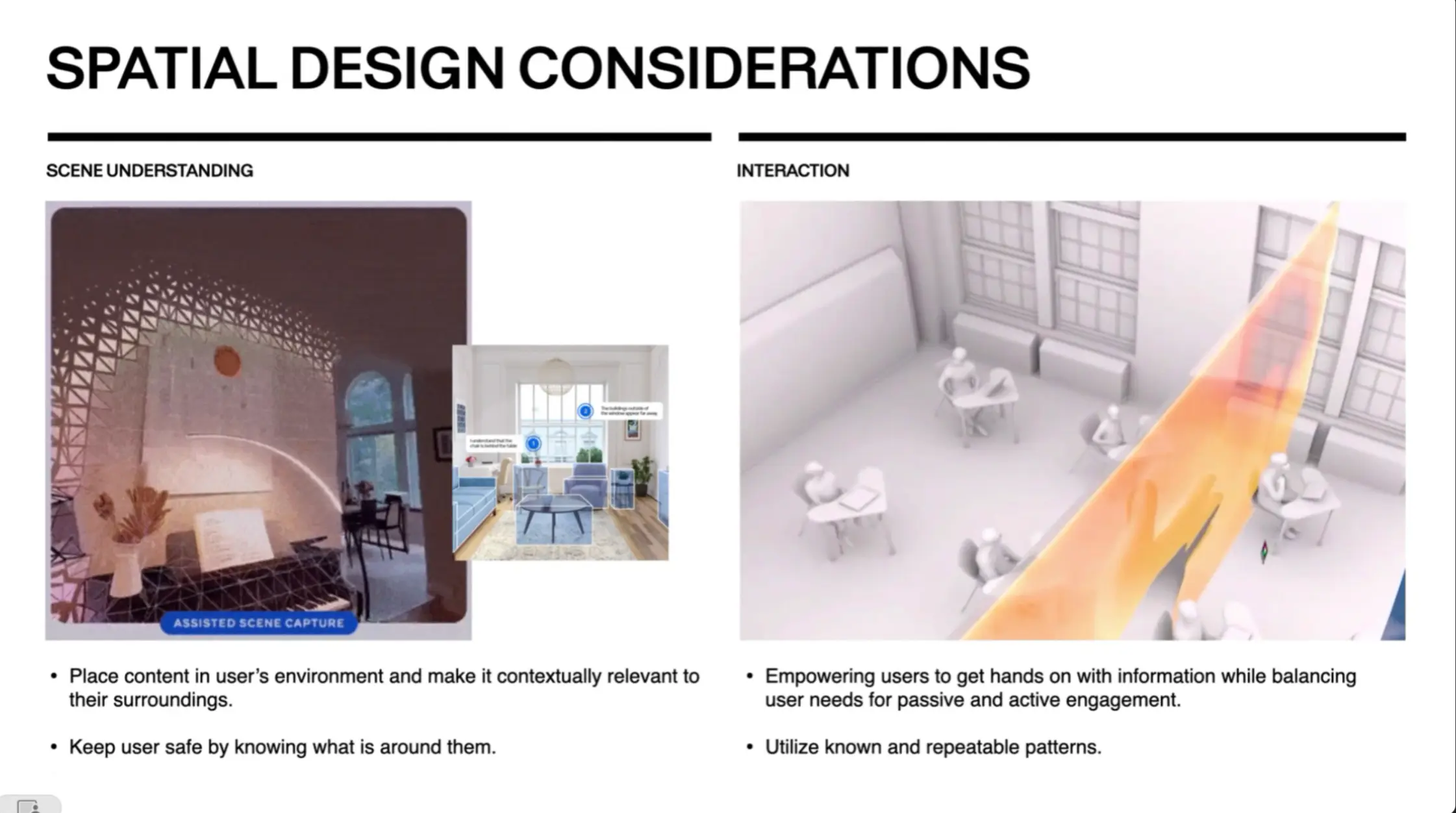Let's look at some of the key takeaways from the talk, highlighting the potential and challenges of XR in transforming how we consume and interact with stories.
The State of XR:
- Apple Vision Pro: Expected release by Spring 2024, initially available in the US. It's developer-focused, expensive ($3,500), and aims to encourage app development for XR.
- XR Development: Current development is challenging, primarily using Unity and Unreal Engine. The field is expected to become more designer-friendly over the next few years.
Redefining Interaction and AI Integration: A move from hand controllers to hand tracking is underway, aiming for more intuitive user experiences. The integration of generative AI, like ChatGPT, is set to revolutionize XR, offering capabilities like live translations and enhanced object recognition.
Understanding XR Terminology:
- XR (Extended Reality): The entire spectrum of augmented, virtual, and mixed reality.
- AR (Augmented Reality): Real-world overlays.
- VR (Virtual Reality): Fully immersive, computer-generated environments.
- MR (Mixed Reality): A blend of VR and AR, interacting with both virtual and real-world elements.
Challenges: Tim highlighted some of the biggest challenges in XR journalism.
- Scene Understanding: Devices creating a 3D mesh of the environment for better interaction and safety.
- Interactions: Importance of optional interactions in storytelling to cater to different user preferences.
- Narrative Mechanics: Balancing linear narratives with the open-world nature of XR.
- Device to Device Handoff: Making the transition to XR devices as seamless as possible.

Voice-Based Storytelling in XR: An important insight from the talk was the potential shift from text-heavy to voice-based storytelling in XR environments. This approach addresses the challenge of viewers' inability to focus on text and the environment simultaneously. Although voiceover narratives can be too long, lengthening the duration of the stories.
Standardizing the adaptation of stories across platforms: Tim proposed multiple avenues to standardize adapting a story across platforms:
- Use a volume-based template in XR to create spatially aware narratives.
- Make stories contextually available based on the user's location, triggering a notification on the device to open an immersive geo-located experience.
- Create companion experiences for mobile XR or headsets, triggered by scanning QR codes on articles.
- Offer bonus interactions on headsets compared to mobile XR.
Conclusion: Tim Clark's insights provide a roadmap for visual journalists venturing into the realm of XR. As the technology evolves, it presents unique opportunities and challenges in storytelling. The shift towards voice-based narratives, the integration of AI, and the need for standardization across platforms are pivotal elements that will shape the future of journalism in the XR space.
